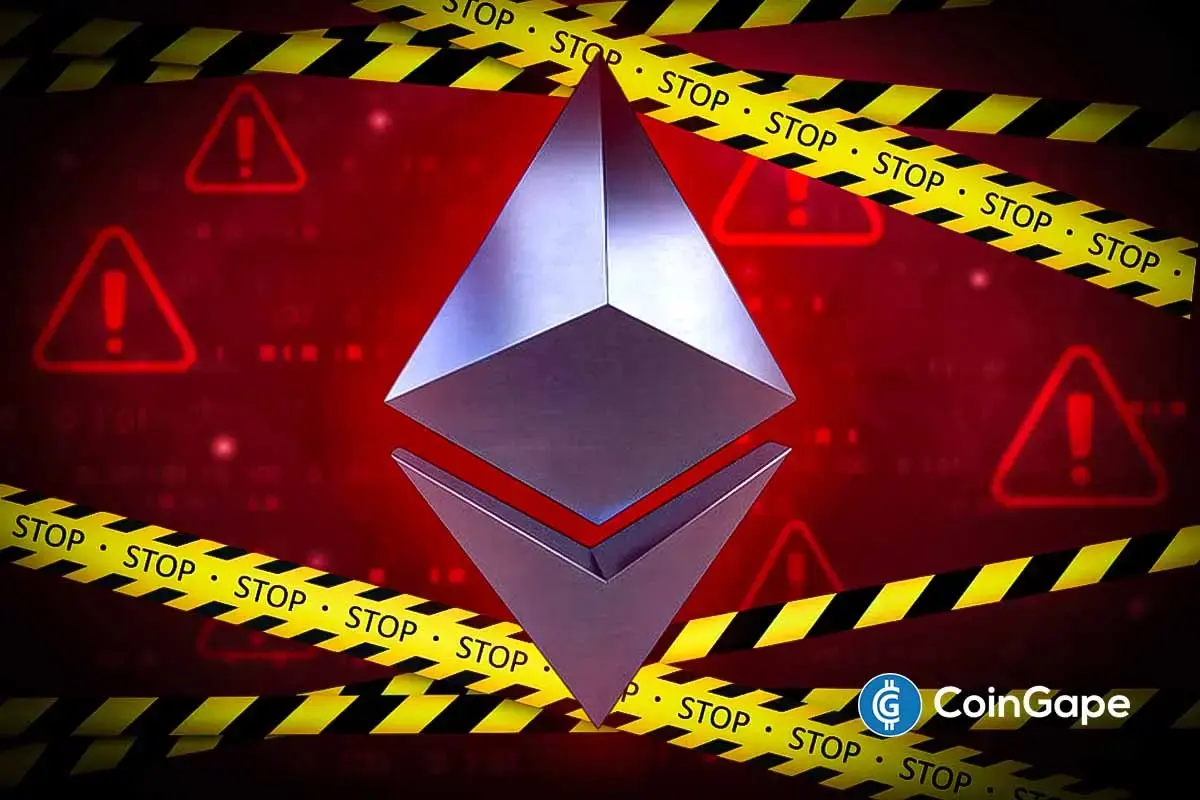Ethereum Prepares Holesky Shutdown as Active Addresses Reach 2021 Levels

Highlights
- Ethereum announces the shutdown of the Holesky testnet, two years after launch.
- Holesky will be fully decommissioned after the Fusaka upgrade finalizes in November 2025.
- Ethereum active addresses hit 19.45 million in August, the highest since May 2021.
Ethereum has announced that it will shut down the Holesky testnet two years after its launch. This comes after ETH’s active addresses reached their highest levels since 2021.
Ethereum Set To Shut Down the Holesky Testnet
In a recent blog post, Ethereum announced that it will shut down its largest public testnet, Holesky. Launched in 2023, this testnet was created to help with staking and validator operations on a larger scale.
It was important for testing key updates like Dencun and the Pectra upgrade, which went live in May.
However, its utility has now run its course. Developers confirmed that Holesky will be fully decommissioned two weeks after the Fusaka upgrade finalizes in November. Once support ends, client, testing, and infrastructure teams will no longer maintain the network.
The decision comes after technical problems started in early 2025. After Pectra launched, Holesky had many issues with validators going offline. This caused long exit queues and made the testnet less useful for developers.
To replace Holesky, Ethereum introduced Hoodi in March 2025. The new testnet was designed to fix the issues that Holesky had. Hoodi has a new group of validators, fully supports Pectra features, and is ready for future updates, including the upcoming Fusaka fork.
For developers focused on dapps and smart contracts, Sepolia remains the primary environment.
ETH Active Addresses Hit Highest Since 2021
According to Everstake data, there were 19.45 million monthly ETH active addresses in August. Since May 2021, when activity peaked at 20.27 million, this is the highest. This indicator displays the number of distinct wallets communicating with the Ethereum network. This includes all transactions, such as DeFi transactions, NFTs, transfers, and staking.
Notably, ETH experienced significant buying activity. Tom Lee’s BitMine recently disclosed holding 1.71 million ETH in its treasury holdings. This is a 12% increase from earlier in the year. Meanwhile, BlackRock’s Ethereum ETF saw a $314 million inflow on August 25. Its trading volumes also surpassed $2.4 billion in a single day.
Analysts claim that the rise emphasizes ETH’s significance as a key platform for Web3 and decentralized applications.
“It’s not just a sign of renewed user interest, but also evidence of an expanding ecosystem,” Everstake commented, pointing to the growing number of projects and developers building on the network.
Additionally, the open interest in CME Ethereum futures reached a record high of over $10 billion. This expansion demonstrated investors’ growing trust in and use of the altcoin. The number of large open interest holders also hit a record 101 in August. These developments support the increased activity the ETH network is witnessing
Recent Posts
- Crypto News
Arthur Hayes Predicts Bitcoin Rally To $500K By Next Year Over Fed Easing
BitMEX co-founder Arthur Hayes has predicted that Bitcoin's price could rally to $500,000 by the…
- Crypto News
China Tightens Stance on Stablecoin and Crypto Payments With New Policy Talks
China is tightening its stance on digital assets again with regulators warning of rising risks…
- Crypto News
Hyperliquid Team Moves $90M HYPE as Network Becomes Top Fee Chain
Hyperliquid logged another major on-chain development today after a team-linked wallet shifted $90 million worth…
- Crypto News
Is Kalshi Manipulating Prediction Markets? Platform Hit With Lawsuit Over Violations
Kalshi has been accused of illegal sports gambling and manipulating the market. This comes as…
- Crypto News
Coinbase Submits Recommendations to CFTC on Crypto Market Rules
The policy recommendations are detailed requests that Coinbase filed with the Commodity Futures Trading Commission…
- Crypto News
21Shares XRP ETF To Begin Trading on Monday as Institutional Inflows Hit $666 Million
21Shares’ XRP ETF is set to join the list of funds already trading in the…